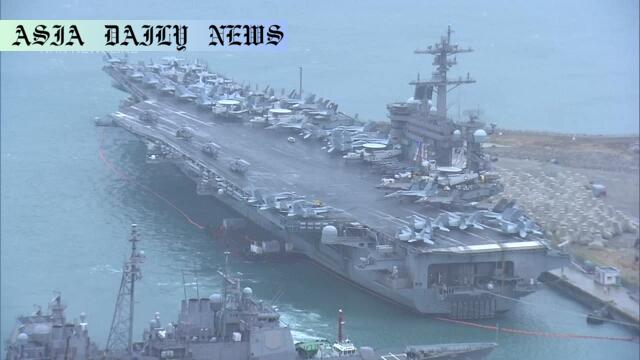US aircraft carrier visits South Korea as Rear Admiral touts strong US-South Korea alliance amid joint military drills.

Introduction: US Aircraft Carrier’s Strategic Presence in South Korea
The arrival of the USS Carl Vinson, a nuclear-powered US aircraft carrier, in the South Korean port city of Busan signals a strong reaffirmation of the strategic partnership between the United States and South Korea. This visit is a critical event amid mounting regional tensions, particularly involving North Korea’s opposition to the growing US military presence around the Korean Peninsula. The presence of dozens of advanced aircraft onboard the carrier, such as F-35C stealth fighters and E-2D early warning planes, exemplifies cutting-edge military capability and the strengthening of mutual defense commitments in the region. Rear Admiral Michael Wosje, commander of Carrier Strike Group ONE, underscored the enduring solidity of the US-South Korea alliance during this port call.
Enhancing Defense Ties Through Joint Drills
South Korea’s Yonhap News Agency highlights that the Carl Vinson is preparing to participate in a trilateral joint military exercise involving Japan, the United States, and South Korea later this month. Such exercises are designed to ensure operational synchronization and enhance the overall readiness of allied forces. The collaborative efforts seek to serve as a deterrent against potential threats from regional adversaries like North Korea, which has continuously voiced strong opposition to these strategic deployments. The emphasis on keeping a robust forward military presence is integral to reinforcing peace and stability in Northeast Asia.
Mounting Regional Tensions with North Korea
While the deployment of a nuclear-powered aircraft carrier acts as a reassuring gesture to US allies, it is seen as a provocative move by North Korea. Pyongyang has been vocal about its opposition to such initiatives, viewing them as escalatory measures in the already tense dynamics of the region. Historically, North Korea has responded to similar strategic deployments with threats or military demonstrations of its own. Given these tensions, the US and South Korean militaries remain vigilant, closely monitoring any actions taken by North Korea in response to this significant naval arrival. These developments underline the geopolitical importance of maintaining a balance of power in the region.
Conclusion: Reaffirming Strength in Alliances
The USS Carl Vinson’s visit to South Korea highlights the commitment of the United States to its defense alliances in Asia. Against the backdrop of regional uncertainties, this port call serves as a clear demonstration of both deterrent power and willingness to collaborate for stability. With advanced technology onboard and high-level military coordination at the forefront, this milestone reflects the critical importance of maintaining unity among allies to address contemporary challenges effectively. As the trilateral drill approaches, the world will be watching closely how these exercises prepare allied forces for any potential threat scenarios in the region, firmly cementing the partnerships necessary for long-term security.
Commentary
A Symbol of Commitment
The arrival of the USS Carl Vinson at Busan speaks volumes about the strategic importance of US-South Korea relations. This move is not merely a port call but rather a symbol of the enduring partnership and military readiness shared between these two nations. In an era of growing geopolitical complexities, such collaborative efforts reassure allies and serve as a reminder of stability amidst uncertainty. For South Korea, it solidifies their defense strategy, showing a strong US backing that boosts morale and fortifies their military capabilities against potential threats such as North Korea. This gesture echoes loudly across the region, resonating with both allies and adversaries.
The Role of Technology in Defense Cooperation
The cutting-edge technology on display aboard the USS Carl Vinson is a testament to US defense innovation, highlighting the role of advanced aircraft such as the F-35C in modern warfare scenarios. These assets provide a significant strategic advantage, enabling more precise, efficient, and effective responses to possible security challenges. For South Korea, access to such technology through joint drills and operational collaboration is invaluable, fostering interoperability and ensuring coordinated defense mechanisms. Technology has increasingly become the linchpin of military strategy, and this partnership ensures both nations remain at the forefront of advancements in the field.
Countering Tensions: The Case of North Korea
While the visit of the USS Carl Vinson boosts regional allies’ confidence, it undeniably stokes tensions with North Korea. Pyongyang often views such deployments as provocations, risking further escalation of hostilities. Yet, these very gestures underscore the need to maintain vigilance and readiness in an area fraught with instability. The balancing act between deterrence and provocation is delicate, but the US and South Korea appear committed to maintaining their stance of strength and preparedness. This strategy sends a clear message to the region: that alliances will not falter in the face of potential threats, and peace will be preserved through unity and deterrence.


